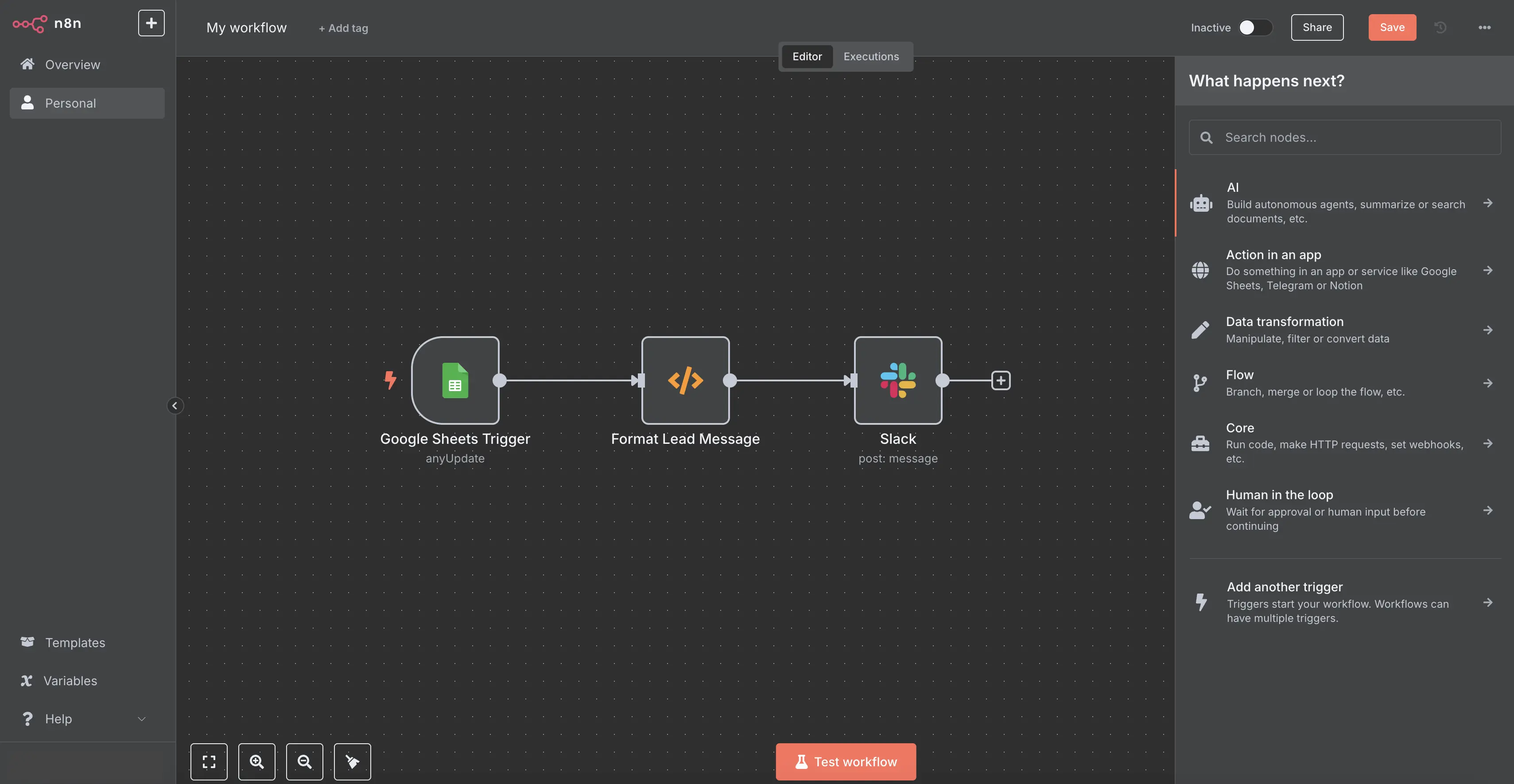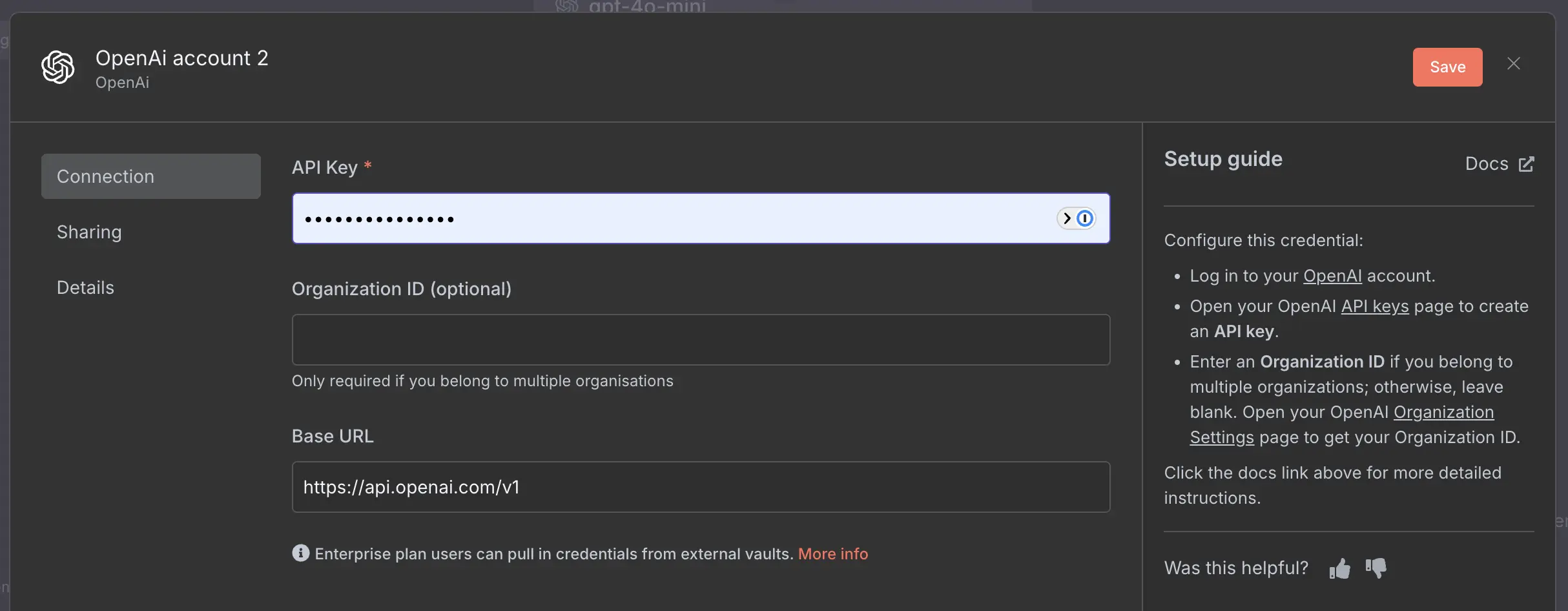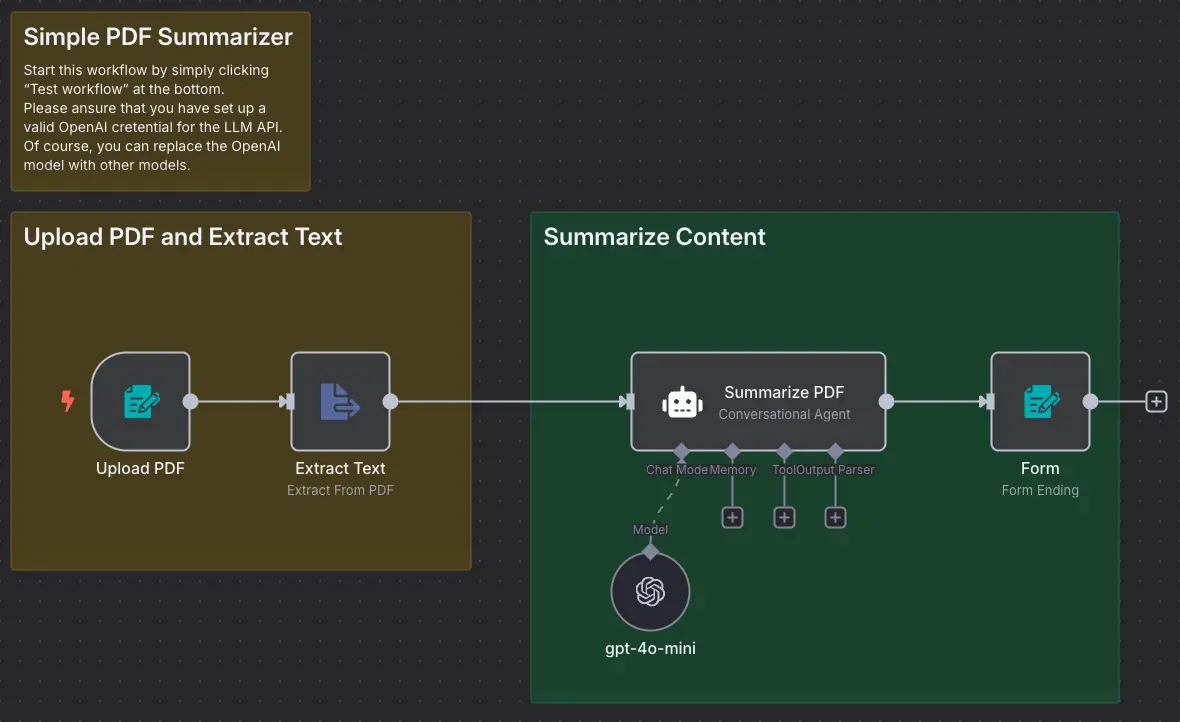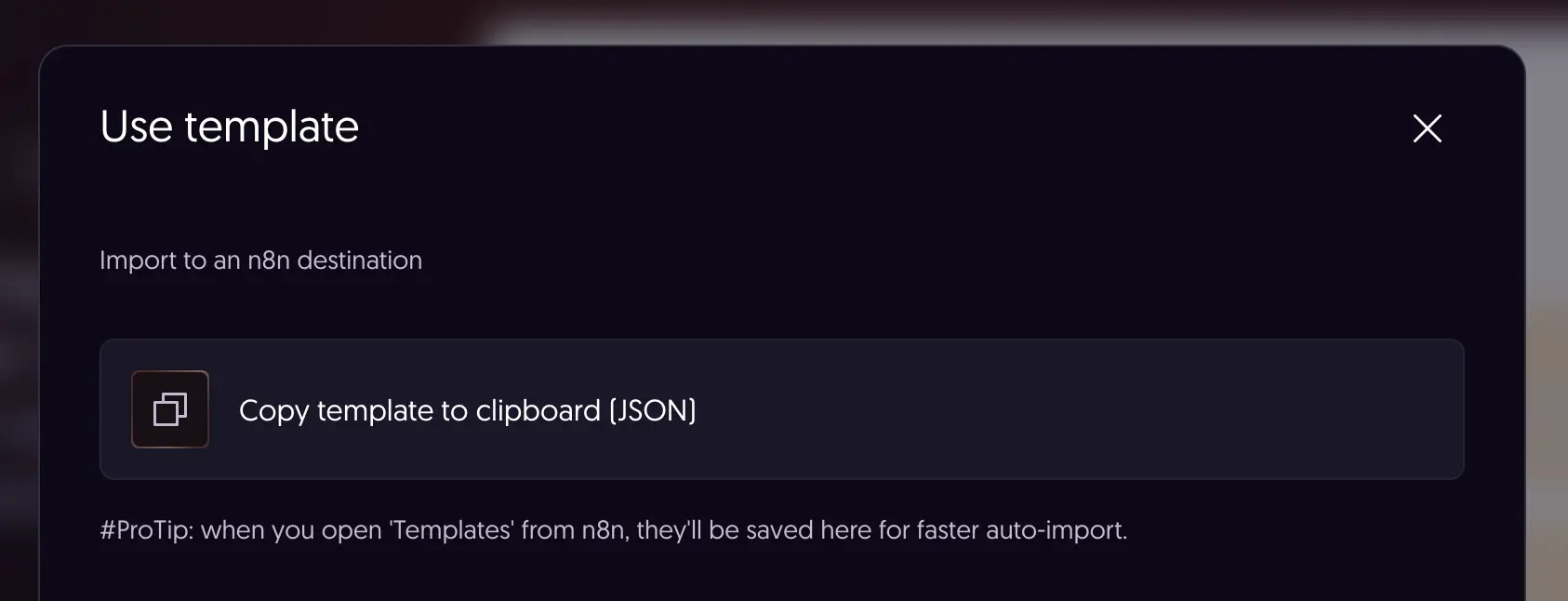Sources of Secrets by HashiCorp Vault - Revisited
Same Goal, Different Pattern In the previous article we synchronized 1Password items into Vault by pulling data with Terraform and writing it into a KV engine.

In recent years, artificial intelligence has dramatically changed the way we work, highlighting just how much it can enhance human creativity and problem-solving. Despite these advances, many organisations still struggle with a familiar issue: the burden of repetitive, low-value tasks. These so-called superfluous tasks — jobs that require little skill or creativity — can drain productivity and lower morale across teams.
Fortunately, we now have a powerful set of tools designed to automate these routine processes, freeing employees to focus on more meaningful and impactful work. As we move further into 2025, one solution in particular is standing out in the world of workflow automation: n8n. This platform is quickly gaining traction as a developer-friendly alternative to established names like Make and Zapier. For technical teams looking for both flexibility and control, n8n is proving to be a real game-changer — and I’m excited to show you why.
n8n is an open-source, fair-code workflow automation platform designed to connect various applications and services. It enables users to build complex automations with minimal coding through its visual interface.
Key characteristics:

n8n offers a variety of advanced features to enhance workflow automation. It supports diverse triggers to start a workflow, including event-based triggers like webhooks and application events, scheduled triggers using cron jobs, chat-based triggers via platforms like Slack and Telegram, manual triggers for testing, and external event streams for real-time data processing. Debugging and monitoring are also made seamless with real-time data flow visualization, detailed execution logs, error handling with notifications, fallback workflows, performance insights, and the ability to re-run individual steps without restarting the entire workflow. Security is prioritized with features like secure secret management (e.g., AWS Secrets Manager, Azure Key Vault), enterprise-grade options such as role-based access control (RBAC), single sign-on (SSO), LDAP, audit logs, and air-gapped deployment for high-security environments. Finally, with an active community, users can access countless community-contributed tools, templates, and workflows.
With all these different features, n8n offers a wide range of use cases, making it a versatile tool for various industries. From automating business processes like customer onboarding and document management to handling data processing tasks such as ETL operations and real-time analytics, n8n excels in streamlining workflows. It supports marketing automation and AI-powered tasks like intelligent data extraction and chatbot creation. Additionally, it empowers IT operations and DevOps teams with capabilities for system monitoring, incident management, and deployment automation, demonstrating its flexibility and adaptability across diverse applications.
Of course, n8n is not the only player in the workflow automation space. It has to compete with established names like Make and Zapier, both of which have their own strengths and weaknesses. Here’s how n8n differentiates itself:
Unlike Make’s visual, cloud-only “Scenario” builder and Zapier’s task-priced, plug-and-play “Zap” wizard, n8n is an open-source platform you can self-host, giving you full data-privacy control and freedom from vendor lock-in. Its pricing is execution-based with no per-step or per-user limits, preventing the hidden cost creep common to Make’s operation counts and Zapier’s task quotas. Beyond drag-and-drop nodes, n8n lets developers embed full JavaScript or Python code, connect directly to databases and command-line tools, and version workflows in Git—capabilities that are only partially supported on the other two platforms. It also ships with ready-made AI/LLM nodes and advanced, real-time debugging, making it the go-to choice when you need both no-code convenience and deep engineering flexibility in a single automation stack.
In short, n8n positions itself as the flexible, developer-first, privacy-friendly automation stack, whereas Make emphasizes visual complexity for power users and Zapier focuses on turnkey simplicity and breadth of SaaS connectors.
n8n can be set up very easily on your own machine. For testing and simple deployments, a basic Docker setup is sufficient. For production environments, we recommend using Docker Compose or other Server setups. In this blog, I will show you how to get started with n8n using Docker.
1docker volume create n8n_data
1docker run -it --rm --name n8n -p 5678:5678 -v n8n_data:/home/node/.n8n docker.n8n.io/n8nio/n8n
http://localhost:5678.Great! You now have a running n8n instance. You can start creating workflows by clicking on the "Create Workflow" button in your n8n dashboard. Here is a list of environment variables you can set to customize your n8n instance.
To get you started with your very first workflow, here is a simple PDF summarizer workflow that uses the OpenAI API to summarize a PDF file you upload. Besides setting up an OpenAI credential with your own OpenAI API key, you don't need to set up anything.

Simply copy this workflow and paste it into your n8n workflow editor:
1{
2 "name": "Simple PDF Summarizer Example",
3 "nodes": [
4 {
5 "parameters": {
6 "content": "## Upload PDF and Extract Text",
7 "height": 359.27075107113785,
8 "width": 461
9 },
10 "id": "aa3a0198-109c-47b5-9efc-cbe1923f2945",
11 "name": "Sticky Note",
12 "type": "n8n-nodes-base.stickyNote",
13 "position": [
14 320,
15 560
16 ],
17 "typeVersion": 1
18 },
19 {
20 "parameters": {
21 "content": "## Summarize Content",
22 "height": 492,
23 "width": 589,
24 "color": 4
25 },
26 "id": "603010f5-1b93-4bd7-a69f-e155b9d12cac",
27 "name": "Sticky Note1",
28 "type": "n8n-nodes-base.stickyNote",
29 "position": [
30 840,
31 560
32 ],
33 "typeVersion": 1
34 },
35 {
36 "parameters": {
37 "path": "pdf",
38 "formTitle": "PDF Summarizer",
39 "formDescription": "Transform PDFs into captivating blog posts",
40 "formFields": {
41 "values": [
42 {
43 "fieldLabel": "Upload PDF File",
44 "fieldType": "file",
45 "multipleFiles": false,
46 "acceptFileTypes": ".pdf",
47 "requiredField": true
48 }
49 ]
50 },
51 "options": {}
52 },
53 "id": "10fda3bc-d5a0-478b-8d57-23d83a28325a",
54 "name": "Upload PDF",
55 "type": "n8n-nodes-base.formTrigger",
56 "position": [
57 400,
58 700
59 ],
60 "webhookId": "6c4a4180-7206-469f-a645-f41824ccbf42",
61 "typeVersion": 2.1
62 },
63 {
64 "parameters": {
65 "operation": "pdf",
66 "binaryPropertyName": "Upload_PDF_File",
67 "options": {}
68 },
69 "id": "1628418e-6374-4c1c-bb22-be1cd5932584",
70 "name": "Extract Text",
71 "type": "n8n-nodes-base.extractFromFile",
72 "position": [
73 600,
74 700
75 ],
76 "typeVersion": 1
77 },
78 {
79 "parameters": {
80 "model": "gpt-4o-mini-2024-07-18",
81 "options": {}
82 },
83 "id": "647013d4-95e9-419f-9afe-ae464d2e0d8d",
84 "name": "gpt-4o-mini",
85 "type": "@n8n/n8n-nodes-langchain.lmChatOpenAi",
86 "position": [
87 920,
88 900
89 ],
90 "typeVersion": 1,
91 "credentials": {
92 "openAiApi": {
93 "id": "LhWaqowR4v52qqZD",
94 "name": "OpenAi account"
95 }
96 }
97 },
98 {
99 "parameters": {
100 "agent": "conversationalAgent",
101 "promptType": "define",
102 "text": "={{ $json.text }}",
103 "hasOutputParser": true,
104 "options": {
105 "systemMessage": "=You are an AI assistant. Your task is to read the provided PDF document, understand its content, and generate a concise and accurate summary. Focus on capturing the main ideas, key arguments, and important details. Do not include irrelevant information or copy large sections verbatim. Your summary should be clear, coherent, and suitable for someone who has not read the original document.\n\nIf the PDF contains multiple sections or chapters, provide a brief summary for each major section, followed by an overall summary of the entire document. If the document is highly technical or academic, ensure that the summary is accessible to a general audience unless otherwise specified."
106 }
107 },
108 "id": "6edff3fc-f47b-4303-b323-7bf1f3dc6bec",
109 "name": "Summarize PDF",
110 "type": "@n8n/n8n-nodes-langchain.agent",
111 "position": [
112 940,
113 700
114 ],
115 "retryOnFail": true,
116 "typeVersion": 1.6
117 },
118 {
119 "parameters": {
120 "operation": "completion",
121 "completionTitle": "PDF summary:",
122 "completionMessage": "={{ $json.output }}",
123 "options": {}
124 },
125 "type": "n8n-nodes-base.form",
126 "typeVersion": 1,
127 "position": [
128 1300,
129 700
130 ],
131 "id": "a3b45968-f511-4cdf-bf1e-773f892fe1f4",
132 "name": "Form",
133 "webhookId": "5a4d9a01-3e23-4a8e-a929-674288bdad32"
134 },
135 {
136 "parameters": {
137 "content": "## Simple PDF Summarizer\nStart this workflow by simply clicking \"Test workflow\" at the bottom. \nPlease ansure that you have set up a valid OpenAI cretential for the LLM API.\nOf course, you can replace the OpenAI model with other models.",
138 "height": 180,
139 "width": 300
140 },
141 "type": "n8n-nodes-base.stickyNote",
142 "typeVersion": 1,
143 "position": [
144 320,
145 360
146 ],
147 "id": "a95533ff-c8b8-48b6-ad38-4bd3cbedb6c1",
148 "name": "Sticky Note2"
149 }
150 ],
151 "pinData": {},
152 "connections": {
153 "Upload PDF": {
154 "main": [
155 [
156 {
157 "node": "Extract Text",
158 "type": "main",
159 "index": 0
160 }
161 ]
162 ]
163 },
164 "gpt-4o-mini": {
165 "ai_languageModel": [
166 [
167 {
168 "node": "Summarize PDF",
169 "type": "ai_languageModel",
170 "index": 0
171 }
172 ]
173 ]
174 },
175 "Extract Text": {
176 "main": [
177 [
178 {
179 "node": "Summarize PDF",
180 "type": "main",
181 "index": 0
182 }
183 ]
184 ]
185 },
186 "Summarize PDF": {
187 "main": [
188 [
189 {
190 "node": "Form",
191 "type": "main",
192 "index": 0
193 }
194 ]
195 ]
196 }
197 },
198 "active": false,
199 "settings": {
200 "executionOrder": "v1"
201 },
202 "versionId": "3b9c9b25-39e7-4ea2-953e-e6dd39234d64",
203 "meta": {
204 "templateCredsSetupCompleted": true,
205 "instanceId": "2ecd2c229ae820e41911df7531b6189474a0aa1e1e5b43f002488bb618430e4a"
206 },
207 "id": "K7rG5gICrgOPWdsx",
208 "tags": []
209}
Don't worry if this looks a bit overwhelming at first. Once copied into the n8n workflow editor, it will be displayed in a user-friendly format. This sample workflow consists of a form trigger, which is the entry point for this workflow and allows the user to upload a local PDF file. The workflow then extracts the text from the PDF and sends it to the OpenAI API for summarization. The result is displayed in the form at the end of the workflow. Try exploring the workflow by clicking on the nodes to see their parameters and settings.

To run the workflow, simply click on the "Test workflow" button at the bottom. Make sure you have set up a valid OpenAI credential for the LLM API. If you want to use a different LLM model, you can easily replace the OpenAI model with another one.
You see, it is very easy to import and share workflows with n8n, as the whole workflow is translated into JSON. If you want to explore more templates and ready-to-use workflows, you can check out the n8n workflow templates page.

n8n stands out as a powerful, flexible workflow automation platform that bridges the gap between no-code simplicity and developer-friendly customization. Its open-source nature, extensive integrations, and hybrid approach make it suitable for a wide range of users and use cases.
With strong community support, continuous development, and a fair pricing model, n8n is an interesting solution for organizations seeking to automate processes, integrate applications, and leverage AI capabilities.
Happy automating!
You are interested in our courses or you simply have a question that needs answering? You can contact us at anytime! We will do our best to answer all your questions.
Contact us